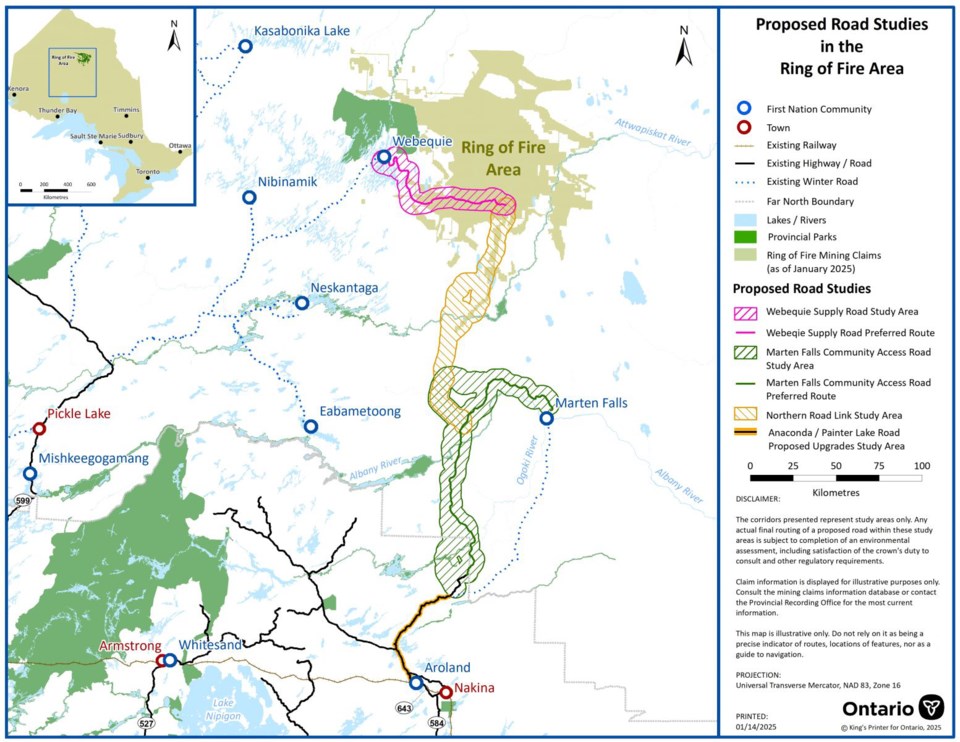THUNDER BAY – The NDP, Liberal and Conservative candidates in Thunder Bay–Superior North all say they want to see the rich Ring of Fire deposits mined in partnerships that include First Nations.
The Ring of Fire is a crescent-shaped area 400-plus kilometres northeast of Thunder Bay, in the James Bay lowlands north of the Albany River.
Early in the current century, De Beers Canada found significant copper and zinc deposits in the area. Chromite, a key ingredient in stainless steel, has also been found in the ring’s 5,100 square kilometres.
Wyloo, an international mining corporation headquartered in Australia, wants to turn its Eagle’s Nest Project in the ring into a major producer of nickel, copper and platinum group metals.
To that end Wyloo has signed memorandums of agreement with two area First Nations: Webequie and Marten Falls.
The Ontario throne speech on April 15 said the province’s government will designate the Ring of Fire a region of strategic importance and bring forth legislation to “streamline” the permitting and approvals process for mine projects such as Eagle’s Nest.
Indigenous leaders said that can’t happen without “meaningful Crown engagement, mutual respect, implementation, resources and the negotiation of agreements” with First Nations.
Liberal incumbent Patty Hajdu, running for a fourth term, said mine development in the Ring of Fire “is something that we can do together, but we can't railroad our way through.
“In fact, that's an old style of politics that hasn't had any success.”
Partnerships involving First Nations are essential, said Hajdu, Indigenous services minister since October 2021.
“Canada will only thrive when every single person in this country feels like they have a place in this economy, and this federal government has understood that.”
Conservative challenger Bob Herman said “fast tracking at the federal level and working with the province, who have indicated they want development, is going to be really good for our region.
“But I think an important part of our plan is committing $1 billion over three years to build an all-season road up to the communities that are around Ring of Fire.”
Also important, he said, is reconciliation, which includes “sharing in the tax revenue that will come from that development” so First Nations can build prosperity in their communities.
Joy Wakefield, running for the New Democrats, said what’s most important is that mine development “happens with the free, prior and informed consent of all the communities involved.”
The NDP is “obviously supportive of things that are going to create jobs in the region and support workers,” she said.
Wakefield said the process for getting new mines approved needs to be efficient.
“But another key thing is, we need to balance that with environmental protection and make sure that we protect the Attawapiskat River and the waters around it, and the wildlife and the land.”
The two other candidates on the ballot in Thunder Bay–Superior North – John Malcolm Northey of the Green Party of Canada and Amos Bradley of the People’s Party of Canada – were not made available for interviews.
Election day is Monday, April 28.
